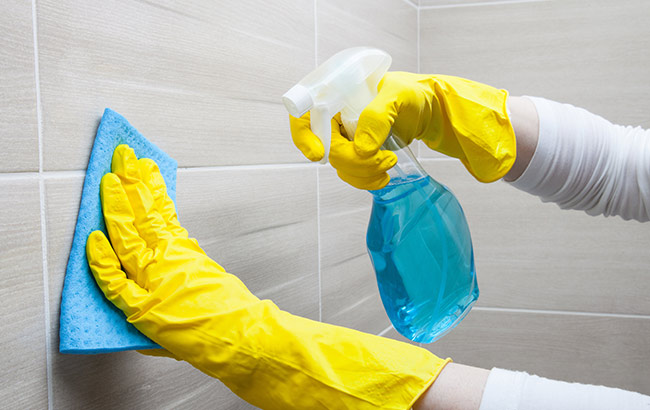
Tiles give your floor the final clean and thematic appearance you have always desired. You can add furnishings and decorations to match and enhance the ambience on the backdrop created by these tiles. While wall tiles may not be as common in India, floor tiles are the most popular finish for Indian homes and buildings.
Everything would be perfect until stains try to clobber the seamless appearance of your tiles. Acid stains out of all, are the worst, and perhaps the most dangerous too.
Why Worry about Acid Stains?
On a tiled floor tiles are a major part of the floor area. However, there is also grout and if you have furniture, that too. Acid stains are possible due to one of the following reasons:
- The acid used as a cleaning agent
- Spillover from an acid container like a battery
- Using lemon, bleach or other acidic chemicals with a floor wipe
In any case, it’s not just the tile which you need to worry about. The grouts are equally important. These thin lines of grout protect the floor from absorbing water (and other substance) between the tiles. Thus, keeping the floor and tile formation intact for a longer time.
Contact with acid can damage the grout lines and open gaps for water and moisture to enter between the tiles. Epoxy and furan resin grouts are more effective in handling exposure to high and low pH chemicals.
Also, while glazed vitrified tiles can handle contact with mild acid or alkalis, alkali proof tiles are made for the purpose. Most glazed ceramic tiles and polished glazed vitrified tiles used in homes can survive contact with mild chemicals. However, you should be quick to remove the stain and wipe the glazed tile surface after accidental exposure.
Industrial complexes can have alkali resistant floor tiles for handling chemical spillage. However, these tiles are usually not recommended for home and office space use. Alkali tiles with furan resin grouts are more appropriate for industrial applications where chemical exposure can be strong and frequent.
Areas Which Are More Prone To Acid Damage?
The bathroom and kitchen are the most likely areas to receive acid damage. You may need to use hard chemicals to clean the spillage and tiled surfaces in these areas. So, this is where you need to be careful to use the chemicals with sufficient dilution and only over the stains.
Clean and wash the chemical spillage over tile surfaces quickly to avoid visible damage.
How To Remove Acid Stains?
You must identify and start damage control from acid spillage as soon as possible. It will minimise the damage and hopefully keep the tiles looking as new as possible. Here are two methods you can use for acid stain removal from your tiles:
- Using baking soda and ammonia
- non-acid-based tile and ceramic cleaners
Baking Soda, Ammonia & Water
Our country is known for home remedies, but this tile cleaning remedy is almost global. Also, this method is the most effective if the stain is fresh. So, here’s how you go about this:
- Cover the stain completely with a thick layer of baking soda powder
- For older stains, you can mix the baking soda with water and make a paste before applying it to the spot
- Wipe the baking soda or the paste with a dry cloth after a few minutes
- Use a clean non-corrosive cloth to wipe the stain completely
- If the stain still stands, mix 10% ammonia with water and wipe the spot with the mix using a soaked cloth
This process should wipe the most hardcore acid stains off your tiles with minimal if any, damage to your tile surface.
pH Balanced Ceramic Surface Cleaners
pH-balanced ceramic surface cleaners are non-acidic and non-corrosive liquid cleaning agents. While you can use them for hard stain removal such as with acid stains, you should use such cleaning agents regularly. These are not only good for your tiles but also for the environment.
Here’s what you need to do with these cleaning liquids over acid stains:
- Mix the liquid as recommended by the manufacturer with water
- Use a soft brush to apply the liquid to the stained part
- Let it be for up to 15 seconds and wipe off the solution with a dry cloth
- If the stain remains repeat the process until it disappears completely
Kitchen and bathroom areas are known for gathering stains. These can happen due to water, soap residue, or simply dust. Regular cleaning will ensure that you don’t have to use corrosive cleaning materials and methods. Thus, keep your tiles shiny and healthy for longer with regular cleaning with mild detergent and warm water.